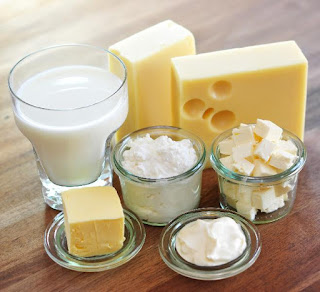What Is Diabetes ? || Symptoms of Diabetes || *Type 1 & Type 2 Diabetes*
DIABETES MELLITUS
Diabetes mellitus is a chronic metabolic disorder that prevents the body to utilise glucose completely or partially. It is characterized by raised glucose concentration in the blood and alterations in Carbohydrate, protein and fat metabolism. This can be due to failure in the formation of insulin or liberation or action. Since insulin is produced by the beta cells of the Islets of Langerhans. Many diabetics can produce sufficient insulin but some stimulus to the islets tissue is needed in order that secretion can take place.
Types of Diabetes Mellitus :
• Type 1 :
Type 1 or Insulin Dependent Diabetes Mellitus (IDDM), also known as juvenile onset Diabetes patients depend on insulin. There is usually sudden onset and occur in the younger age group and there is an inability of pancreas to produce adequate amount of insulin.
IDDM may be caused by virus or due to autoimmunity. The child is usually underweight. Acidosis is fairly common.
• Type 2 :
Type 2 or Non-Insulin Dependent Diabetes Mellitus (NIDDM), is non-insulin dependent form, and develops slowly and is usually milder and more stable. Insulin maybe produced by pancreas but action is impaired.
NIDDM occurs mainly in adults and the person is usually overweight. Acidosis is infrequent.
• Malnutrition Related Diabetes Mellitus :
Third type of Malnutrition Related Diabetes Mellitus, MRDM called by WHO has been categorised as a separate entity. This type of diabetes is mainly seen in some tropical countries like India and it occurs in young people between 15-30 years of age.
Generally people with MRDM are lean and undernourished. In this type of diabetes, the pancreas fails to produce adequate insulin.
• Symptoms of Diabetes Mellitus:
Initial observations may include the following :
• Increased thirst (polydipsia).
• Increased urination (ployuria).
• Increased hungry (ployphagia).
• Weight loss (type 1) or Obesity (type 2).


Clinical Laboratory Test Data Reveal :
• Glycosuria (sugar in the urine).
• Hyperglycemia.
• Abnormal glucose tolerance tests.
Other possible symptoms such as the following may appear :
• Blurred vision.
• Skin irritation or infection.
• Weakness, loss of strength.
• Decreased healing capacity.
Continued symptoms occur as the uncontrolled condition becomes more serious :
• Fluid and Electrolyte imbalance.
• Acidosis (Ketosis, Ketonuria).
• Coma.
GLYCOSURIA :
When the blood glucose level exceeds the renal thresh hold (about increase 160 to 180 mg per 100ml) glycosuria occurs.
Treatment of Diabetes Mellitus :
Diabetes can be treated by diet alone or diet and hypoglycemic drugs or diet plus insulin depending on the type and severity of the condition.
Foods to be Avoided :
Simple sugars - Glucose, Honey, Syrup, Sweets, Dried Fruits, Cake, Candy, Fried Foods, Alcohol, Nuts, Jaggery, Sweetened Juices.
Eaten in Moderation :
Fats , Cereals, Pulses, Meat, Egg, Fruits, artificial sweeteners.
Foods Permitted :
Green Leafy Vegetables, Fruits except - banana, lemon, clear soups, onion, mint, spices, salads, plain coffee or tea, skimmed and butter milk.












Comments
Post a Comment
Please do not enter any spam link in the comment box.